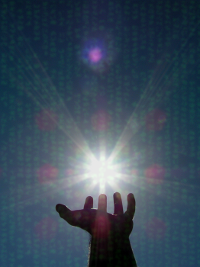8. Pebble
Tech watchers keep saying and expecting smartwatches to be The Next Big Thing after smartphones and tablets, and a lot of industry players are thoroughly in on the whole idea. As a funky sidenote, everybody is expecting Apple to come out with some sort of an amazing device known as an iWatch, and blow everyone out the water, so they’ve pre-emptively begun releasing their own, like Samsung with their Galaxy Gear.
Pebble is among them, but Pebble seems to be taking a tiny bit different approach. First off, they’re actually the first to get started and succeed. Second of all, they aren’t going for all too much bling, at least judging from the type of screen it has. It’s a monochrome non-touch e-Paper screen, but in every way that matters it is a very useful smartwatch, and what makes it compelling compared to Galaxy Gear, is that it’s independent, and established with its own well fed app store.
This, in short, means that with Pebble you can do more. It supports any Android 4.0 or greater device, as well as iPhones, whereas Galaxy Gear supports only some Samsung Galaxy phones. The display is always on and consumes so little power that it can last 5 to 7 days whereas Galaxy Gear’s screen isn’t always on, and lasts only about 2 days. Pebble is also fully water resistant while Galaxy Gear can only take a few drops without breaking. Pebble’s band is also swappable whereas on the Galaxy Gear it’s integrated. And very importantly, Pebble has much more apps to choose from, including gesture activated applications.
This makes Pebble a very powerful, and currently the most useful smartwatch out there, and at a somewhat lower price.
With a device like this you will be looking at your smartphone far less because so many of its most used functions can be utilized through Pebble. For example you don’t need to look at your smartphone to check the time, check messages, calls or other notifications, check the weather, get location recommendations, and a lot more. It extracts some of the most used and most useful functions of a smartphone and puts it right there on your wrist while relying on the smartphone’s computing power, connectivity, and software for most of the behind the scenes processing.




Slarti Bartfast
In the Bullet “you get something like a 1000 megawatts of broadcast power” – yeah right,as long as you have a nuclear power station in your bedroom.
Linda Savage
To get this to work with a Macintosh desktop would I just need chrome for mac ??
Linda Savage
would this work with a macintosh desktop computer ??